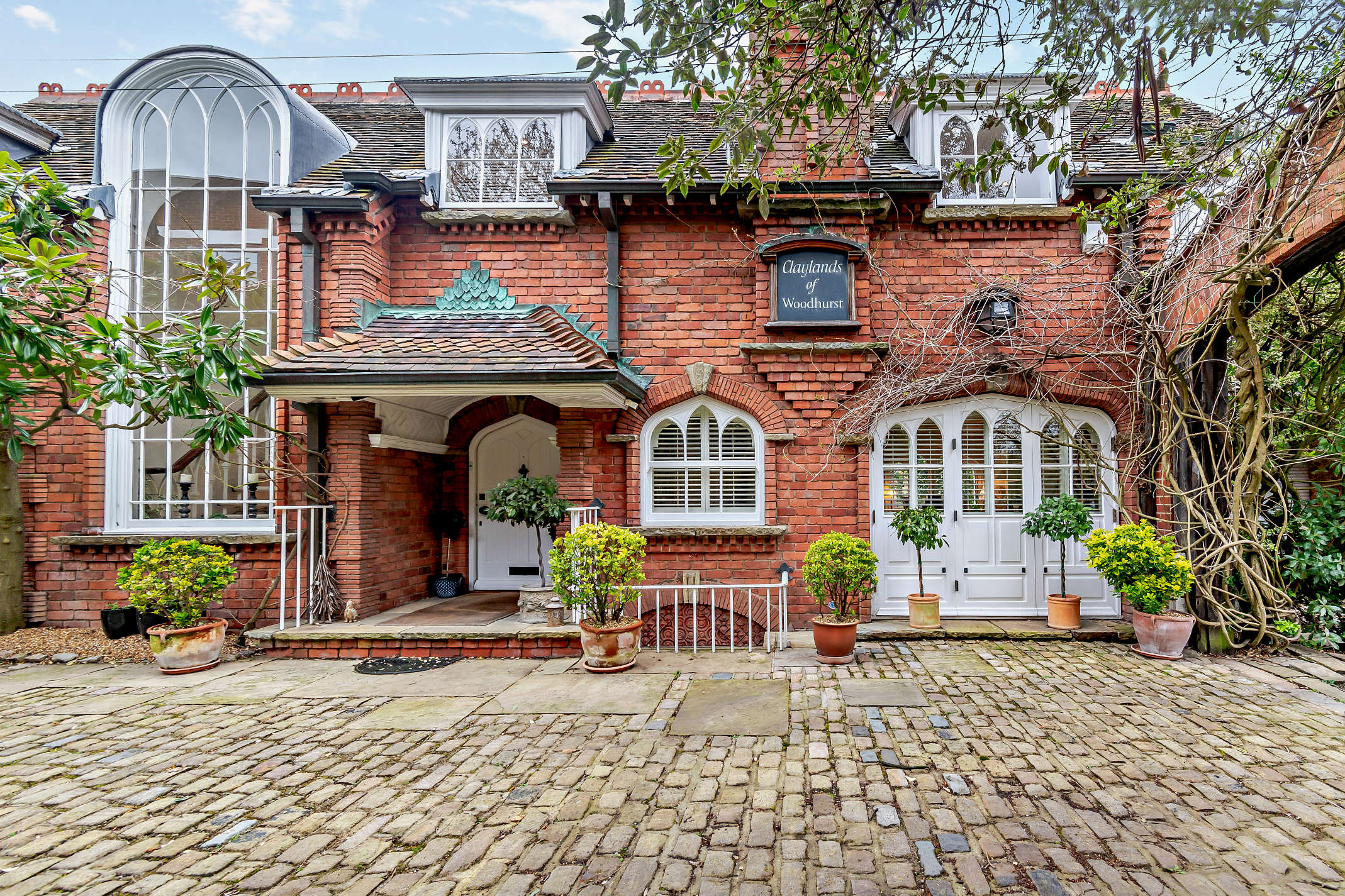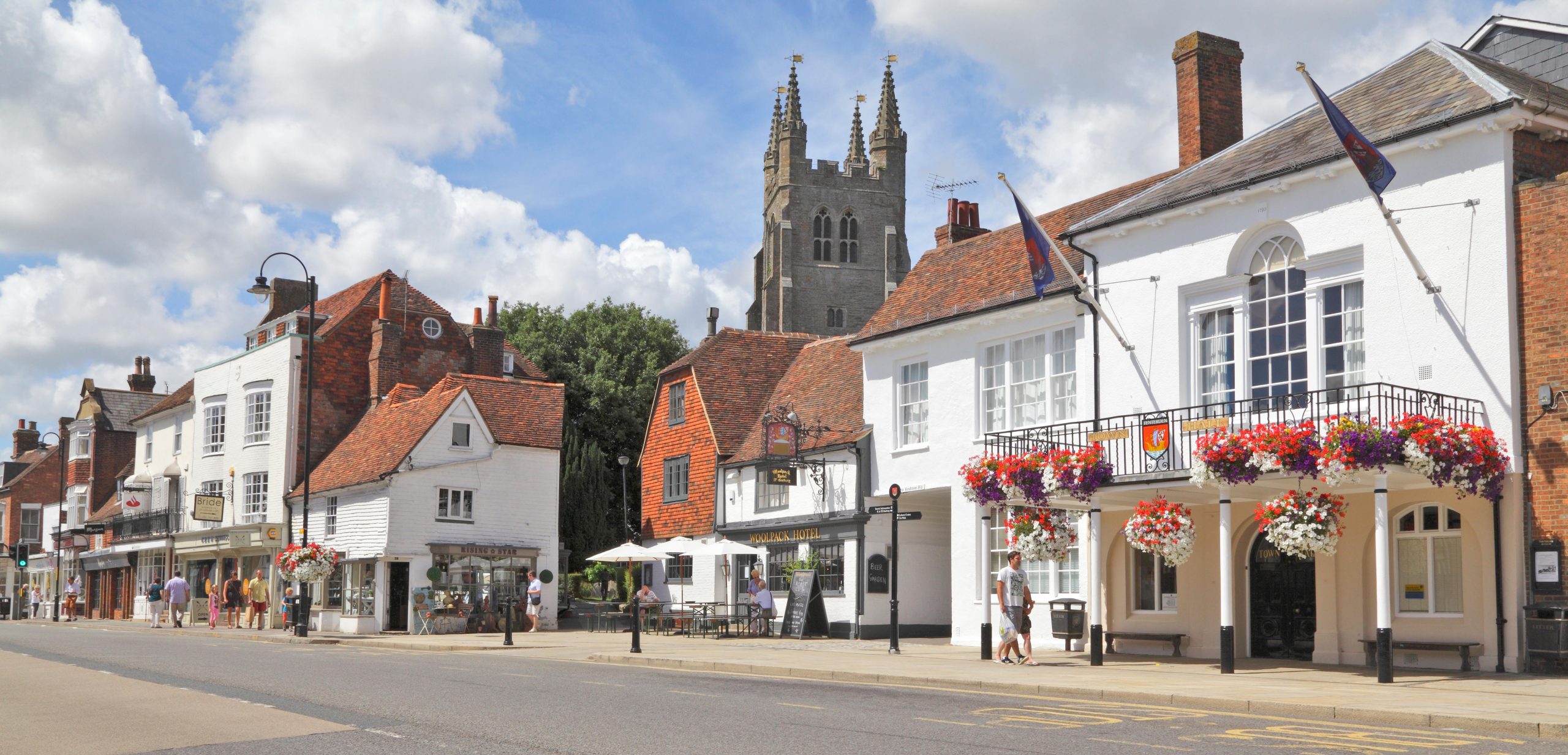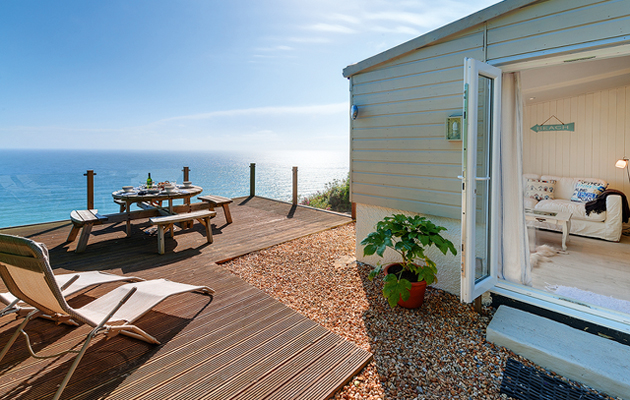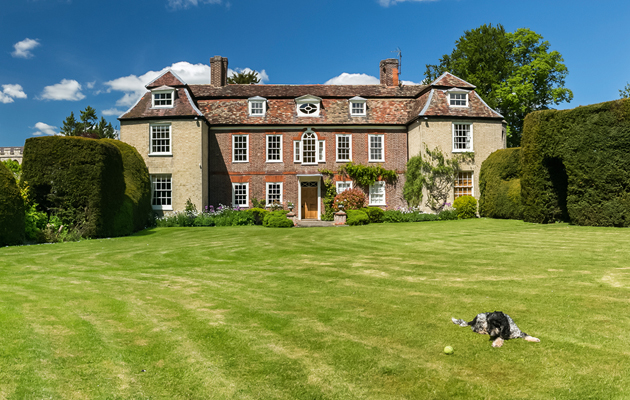Buying a beach hut
Beach huts are commanding huge prices and are surprisingly difficult to lay your hands on but it's not impossible when you know where to go


The humble beach hut is humble no longer. Huts in popular locations such as Southwold can expect to fetch about £30,000. Those in Mudeford, Dorset, regularly sell for £130,000 (although Mudeford prices are a slight anomaly it's one of the few locations in Britain where you're permitted to sleep in your hut). In West Wittering, where rocker Keith Richards bought a modest hut last year, these mini properties sell for between £25,000 and £40,000. Even huts in less publicised areas have soared in value. 'Prices have gone up tremendously,' says Mark Oliver, whose estate agency, Oliver and Saunders, has a special beach-hut department covering Worthing to Rustington, where an 8ft by 6ft hut now averages about £13,000. 'Three years ago, you could have bought a hut for £1,000.' And it would seem this is not only a southern phenomenon. Four years ago, a hut in Abersoch, Wales, achieved almost £40,000. Even trying to rent a hut can be as much of an issue. Last year, one couple desperate to secure a long-term lease on a hut in Avon, Dorset, spent four freezing January nights queuing outside the administration office in order to be first in line. So why all the interest in what is, essentially, a shed on the shore? Talk to any 'hutter', and it's clear it has little to do with their investment potential. 'My family and I have been to Southwold every year except one since 1973,' says hut owner John Bucknell. 'For all those years, we rented a beach hut, and when we had an opportunity to buy one in 1999, we did so at a cost of £10,000. Some people thought we were mad. It's currently valued at £32,000, but I wouldn't sell it for £50,000. That's how much it means to my family and me.' Part of the increase in demand can be put down to the fact that more and more of us are foregoing the cost, hassle and terrorist threat of a holiday abroad and are making the most of what have been (this July excepted) increasingly glorious summers at home. And in the summertime at a British beach, a hut is an extremely convenient commodity a place to store beachy things, such as deckchairs and barbeques, toys and clothes. It's somewhere nice and private to get changed, and a shelter from our unpredictable weather. 'You can just roll up, and everything is there for you,' says Julian Oliver, beach-hut owner and estate agent in the Whitstable area. 'You're instantly on holiday.' But there's more to the British love of the beach hut than mere convenience. After all, it evolved on these very shores, and, for many, huts are as much a part of the seaside as dribbly ice cream and fish and chips. In fact, they aren't solely a British prerogative; you'll find plenty of beach-hut equivalents on the shores of northern France and Belgium. And yet there, they are little more than changing rooms. Here, they form the hub for family gatherings and spawn whole hut-related communities. And they're used all year round. 'We spend three weeks there in the summer, and quite a few weekends over the rest of the year,' says Laura Petford, whose family has owned a hut in West Wittering for the past four years. 'Because you can go inside, you can go down to the beach even if the weather isn't great.' Perhaps it is because we are an island race that we feel the urge to possess a little bit of our coast. 'You feel as if you are master of all you survey, king of the beach,' says Tim Baber, who runs a website for Mudeford Sandbanks (www.msbnews.co.uk) and is something of a fanatic about the area's 354 huts. For the land-locked, the seaside offers the ultimate escape. 'To quote Arcadia for All,' says Mr Baber, 'it is a place where the rich can play at peasants and the poor at landowners.' The beach hut and all it represents has a way of capturing the imagination. Kathryn Ferry is now recognised as an expert on beach huts, but her interest began with a chance trip to Herne Bay in Kent. 'It was one of those crisp November days, and the bright wintry light was casting these amazing shadows of the huts round the bend along the beach. I took a photograph and that was the beginning I started to notice them wherever I went.' She subsequently took two months out and travelled around the British coast studying them for her forthcoming book Sheds on the Seashore. She is also a judge for a remarkable beach-hut event in Lincolnshire. September will be an especially good month for hut lovers there the county is hosting the first-ever celebration of the British beach hut with a weekend of festivities, but it also marks the unveiling of some remarkable new additions to the coastline. Conceived by lead artist Michael Trainor as a way of regenerating a forgotten area of England, designers and architects were asked to 're-imagine the beach hut for the 21st century'. The result was an astonishing 240 entries from 15 countries, nine of which will be installed between Mablethorpe and Anderbury Creek. Ranging from Jabba, a multi-coloured organic-looking structure that aims to be 'the world's first contemporary cave' to Come up and see me (Mr Trainor's own design), which looks exactly like an enormous glass of gin and tonic complete with a straw, the designs have captured the imagination of top designers and architects and turned the beach hut into a work of art. 'There's something very liberating about designing a structure without having to think about pipes and fire escapes,' says architect Will Alsop. His design, Oyster Pleasance, has been built full scale for the current exhibition of the entry models at the Hub in Sleaford (www.thehubcentre.org), and will be one of those eventually installed. 'The beach-hut idea was brilliant,' says Peter Fender from Lincolnshire Council, who initiated the project. 'We wanted something that would bring these towns together, and one of the things that they have in common is their beach huts, some of which are quite derelict.' Unlike many council art schemes, this one will directly benefit the community, first by bringing an interest to the local area, and secondly because anyone will be able to rent the huts on a daily or weekly basis. Generally, the project has been well received by visitors and locals alike, although one of the designs was initially vetoed by one village. 'People often have an imagined idea of what the beach hut ought to look like, but the seaside has always been a place where anything goes,' says Mr Trainor. 'It's as if, as you get to the end of the land, your inhibitions run out. Things become much freer. You take your clothes off. And the buildings become more free-thinking.' 'It's a really brave thing to do,' agrees Dr Ferry. 'But then there's another kind of beach-hut life now to the one that used to be painted. It's younger, and it's family-orientated. In a way, things have come full circle the beach hut is going back to its heyday.' Bathing Beauties runs until September 2 and the Festival of Bathing Beauties is on September 22?23 (www.bathingbeauties.org.uk) Hut hunting Finding the perfect beach hut is not impossible. Yet, at the time of writing, there are no nationwide regulations governing sales and rentals. The newly formed National Association of Beach Hut Owners (Andrew Selwyn-Crome, 01379 870761; www.nabho.org.uk) can offer advice, but it is still necessary to find out how things are done in your area. In general, beach huts are sold leasehold, which means that a ground rent is payable to the owner of the land (usually the council or a private estate). Some areas, such as Whitstable, do have freehold properties for sale, but this factor will be reflected in the price. A leasehold property in Whitstable could expect to fetch £17,000, but the freehold would be closer to £30,000. Beach huts aren't always advertised in the most obvious places. The local council should know who owns private huts in the area, and is the best place to look if you want to rent. Local papers and estate agents are good places to try, as is the beach itself (on the Isle of Wight, this is the main way huts are advertised). Finally, the internet is a useful tool. Good sites include Dr Ferry's own site, www.beach-huts.com. Also, try www.beach-huts.co.uk and www.beachhuts.org.uk You needn't stick with the hut you buy. As long as you stay within the guidelines for the area (the rulebook for Mudeford runs to 60 pages; all huts at Goring must be painted white), you can commission your own dream hut. The team at Beach Hut World (01883 732144; www.beachhutworld.com) build 8ft by 12ft huts with a veranda for about £4,000. Or for £5,000, you could commission one of James Ward's bespoke huts (01328 851348; www.uk-beachhuts.co.uk). You'll need to insure your hut. Storm damage makes up 30% of claims, but 50% are related to theft or vandalism (The Queen lost her treasured Norfolk beach hut to arsonists). T L Risk Solutions (0113?224 5355; www.tlrisksolutions.com)offer an average premium of about £215 (with a 20% discount if you belong to a beach hut association). Huts require regular maintenance. At the very least, they'll need repainting with tough outdoor paint every two to three years. Huts are basic affairs, with no electricity or water, so check where the nearest facilities are, and whether solar panels are permitted.
Sign up for the Country Life Newsletter
Exquisite houses, the beauty of Nature, and how to get the most from your life, straight to your inbox.
Country Life is unlike any other magazine: the only glossy weekly on the newsstand and the only magazine that has been guest-edited by HRH The King not once, but twice. It is a celebration of modern rural life and all its diverse joys and pleasures — that was first published in Queen Victoria's Diamond Jubilee year. Our eclectic mixture of witty and informative content — from the most up-to-date property news and commentary and a coveted glimpse inside some of the UK's best houses and gardens, to gardening, the arts and interior design, written by experts in their field — still cannot be found in print or online, anywhere else.
-
 Vertigo at Victoria Falls, a sunset surrounded by lions and swimming in the Nile: A journey from Cape Town to Cairo
Vertigo at Victoria Falls, a sunset surrounded by lions and swimming in the Nile: A journey from Cape Town to CairoWhy do we travel and who inspires us to do so? Chris Wallace went in search of answers on his own epic journey the length of Africa.
By Christopher Wallace Published
-
 A gorgeous Scottish cottage with contemporary interiors on the bonny banks of the River Tay
A gorgeous Scottish cottage with contemporary interiors on the bonny banks of the River TayCarnliath on the edge of Strathtay is a delightful family home set in sensational scenery.
By James Fisher Published
-
 What to expect when you're expecting (to move to the countryside)
What to expect when you're expecting (to move to the countryside)On March 28, agents Michael Graham will be showcasing some of their best countryside properties at their west London office.
By James Fisher Published
-
 Property Talk: When is the right time to downsize?
Property Talk: When is the right time to downsize?Sometimes our homes can get too big for us, meaning it’s time to downsize. Here, we speak to those involved with the process.
By James Fisher Published
-
 How to win in the property market: Tips from some of Britain's best buying agents
How to win in the property market: Tips from some of Britain's best buying agentsWhether looking for the perfect family home or negotiating on price, buying agents do the heavy lifting–and are well used to analysing the market. Carla Passino gets advice from a few of the best.
By Carla Passino Published
-
 Top tips on renting your holiday home
Top tips on renting your holiday homeThe holiday-home market on the Cornish coast looks set for a lively summer. Arabella Youens finds out how to make the running costs bearable.
By Arabella Youens Published
-
 Tips and advice for holiday home owners
Tips and advice for holiday home ownersWith the start of the summer season nearly upon us, more and more country-house owners are dipping into the short-let scene.
By Country Life Published
-
 Property guide to Elstead
Property guide to ElsteadFreddie Mack shares the secrets of Elstead in Surrey, a prime spot for young families looking for properties outside London near good schools
By Country Life Published
-
 Property guide to Cheriton
Property guide to CheritonIf you're considering buying property in or around Cheriton this year, take a look at our property guide which covers where to buy, what prices to expect and where to have fun in the area
By Country Life Published
-
 Make your holiday let work for you
Make your holiday let work for youIf you're considering renting out your holiday property prepare by reading this first
By Country Life Published
